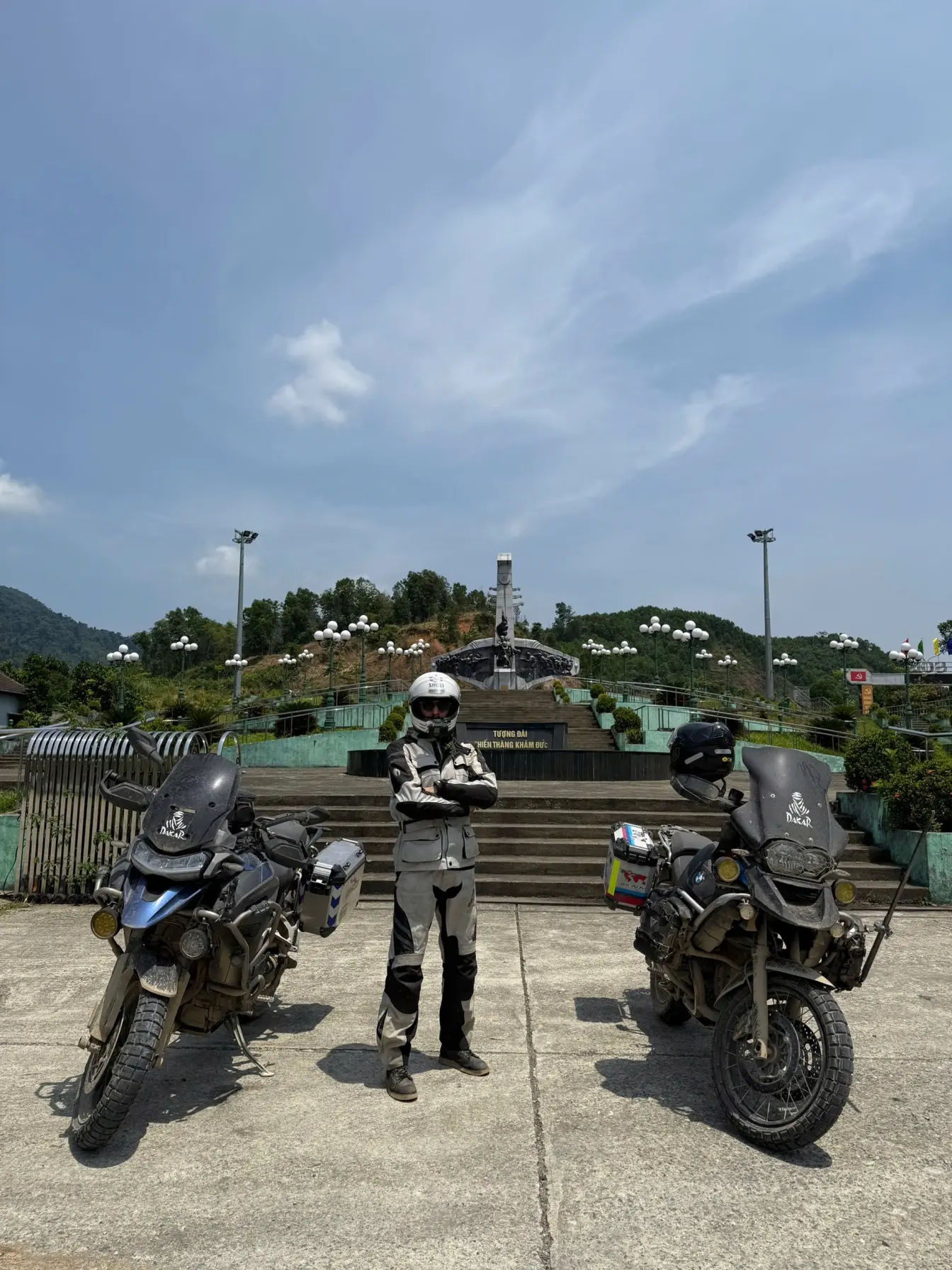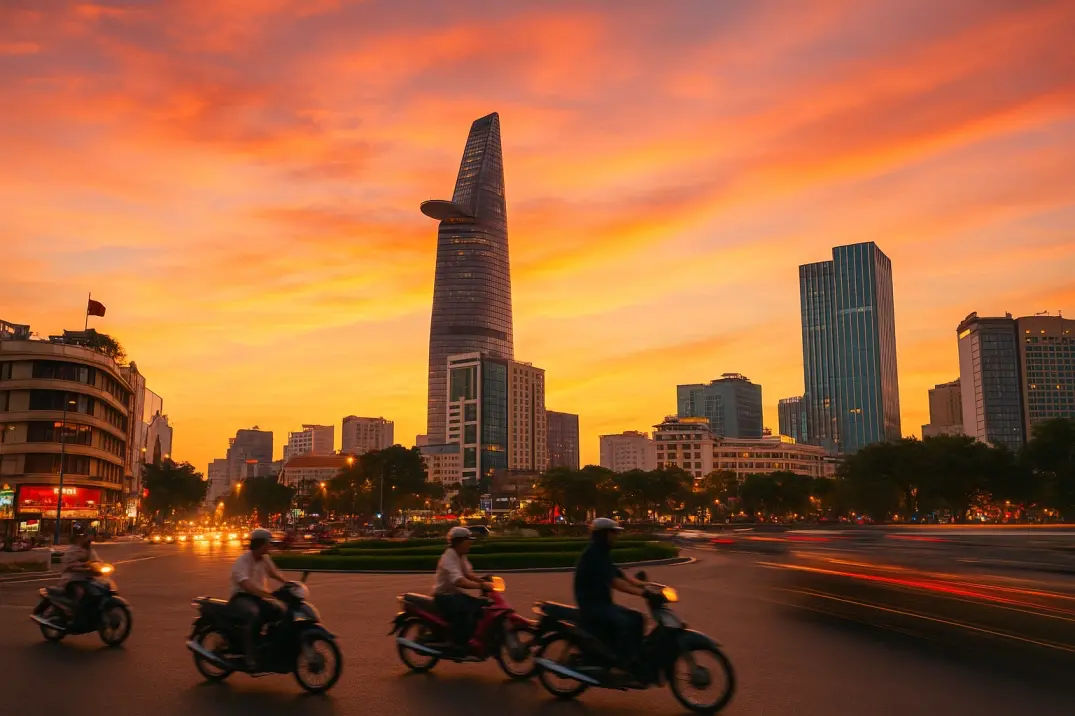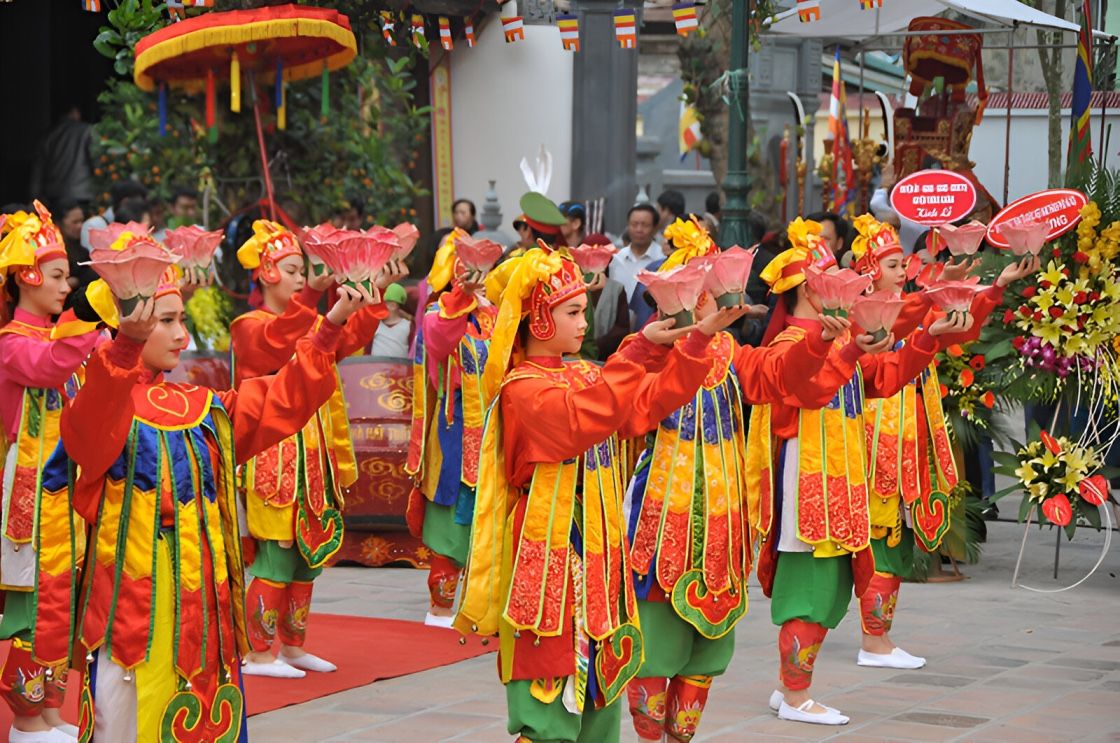
When you land in Ho Chi Minh City, the first thing you notice is the rhythm of the streets—morning coffee stalls buzzing at sunrise and scooters zipping past well into the night. To keep up with the city’s nonstop energy, it helps to know the essentials: the exact local time, time zone, time difference with your home country, plus sunrise and sunset hours. Whether you’re catching a flight, booking a tour, or just planning a video call with friends back home, staying in sync with Saigon time makes your trip smoother.
- Check out Local time zone in Vietnam
Join Our Motorbike Tours Today
Discover hidden trails, stunning landscapes, and authentic local life on our guided motorbike tours across Vietnam.
Ho Chi Minh City Time Zone
Ho Chi Minh City follows Vietnam Standard Time (GMT+7 or UTC+7). This is the same across the entire country, from Hanoi in the north to the Mekong Delta in the south. Unlike many countries, Vietnam does not observe daylight saving time. That means the clock stays consistent all year long, without the sudden one-hour shifts that can confuse travelers.
For anyone visiting, this simplicity makes life easier. Whether you are planning business meetings, remote work calls, or simply trying to coordinate with loved ones abroad, you know the local time will remain steady.
- Check out Districts of Ho Chi Minh City
Comparing Ho Chi Minh City Time with the World
Within Asia
If you are traveling around Southeast Asia, time will feel effortless. Bangkok in Thailand and Kuala Lumpur in Malaysia share the same time zone. Singapore also runs on GMT+7, so no adjustment is needed when flying between these cities. However, move further east and the difference grows. Tokyo in Japan is two hours ahead, while Beijing in China is just one hour ahead.
With Europe
For travelers from Europe, Vietnam is always ahead. London is seven hours behind, so when it’s 8:00 PM in Ho Chi Minh City, it’s just 1:00 PM in the UK. Paris and Berlin are six hours behind, while Moscow is four hours behind. These differences mean that mornings in Vietnam overlap with late nights in Europe, making it possible to catch a call before heading out for breakfast pho.
Across North America
The time difference is wider between the United States and Canada. New York and Toronto are eleven hours behind, so evening in Vietnam means early morning there. On the West Coast, Los Angeles lags fourteen hours behind, which can make scheduling conversations a bit tricky. Many travelers find themselves talking to family in the US just before bed or right after waking up.
Australia and Oceania
The difference narrows again if you are traveling south. Sydney and Melbourne are three hours ahead of Ho Chi Minh City, while Auckland in New Zealand is five hours ahead. This makes Vietnam a convenient base for digital nomads working with both Asian and Australian time zones.
Africa
Ho Chi Minh City is generally four to seven hours ahead of most African cities. It is six hours ahead of Lagos, five hours ahead of Cairo and Johannesburg, four hours ahead of Nairobi, and seven hours ahead of Casablanca. Since Vietnam does not use daylight savings, any shifts come from the African side, so it’s always best to double-check local time before scheduling.
The Middle East
In the Middle East, Dubai runs three hours behind Vietnam, while Istanbul in Turkey is four hours behind. These smaller differences make it easier for business travelers connecting across these regions.
A Day in Ho Chi Minh City
The flow of time in Saigon has its own character. Mornings begin early, with locals gathering at street-side cafés for strong black coffee or cà phê sữa đá. Parks fill with people exercising, and food vendors set up steaming bowls of breakfast pho. Afternoons slow under the tropical heat.
Many retreat indoors, offices hum quietly, and cafés become a cool refuge for both workers and wanderers. By evening, the streets wake again when markets glow, rooftop bars sparkle above the skyline, and families gather for dinner at small restaurants. Late nights stretch on with motorbikes still buzzing through the streets, proving that this is truly a city that never fully sleeps.
Practical Implications for Your Trip
Jet Lag
Travelers from Europe and the Americas will feel the difference most sharply. Being seven or more hours ahead of Europe, and twelve or more hours ahead of the United States, jet lag is almost guaranteed. A good trick is to try sleeping on the plane and to get plenty of sunlight as soon as you land. It helps reset your body clock faster.
Scheduling Calls
For remote workers and digital nomads, timing is everything. The easiest overlap with Europe is in the late afternoon or evening in Ho Chi Minh City, which matches up with early morning there. With the Americas, it works the other way around; mornings in Vietnam line up with evenings across the US and Canada.
Business Hours
Most offices and government services operate from 8:00 AM to 5:00 PM, Monday through Friday. However, shops, markets, and restaurants stay open well into the evening, and many cafés keep their doors open until late at night.
Flight Bookings
One common source of confusion for travelers is flight times. Airlines always list them in local time, so if you are booking multi-leg journeys, double-check the time zone of each destination to avoid missed connections.
Conclusion
Time in Ho Chi Minh City runs on GMT+7, steady and unchanging. It aligns perfectly with much of Southeast Asia and remains manageable for the rest of the world. But beyond the numbers, time here feels alive, from the rush of early mornings to the neon glow of late nights.
For travelers, embracing this rhythm while keeping an eye on the clock will make every moment in the city smoother and richer.
About the Author
Thu is a Vietnamese travel writer who specializes in practical guides and cultural insights about life in Vietnam. From navigating Saigon’s buzzing streets to understanding local time zones, she shares tips that make every traveler’s journey smoother and more connected.











